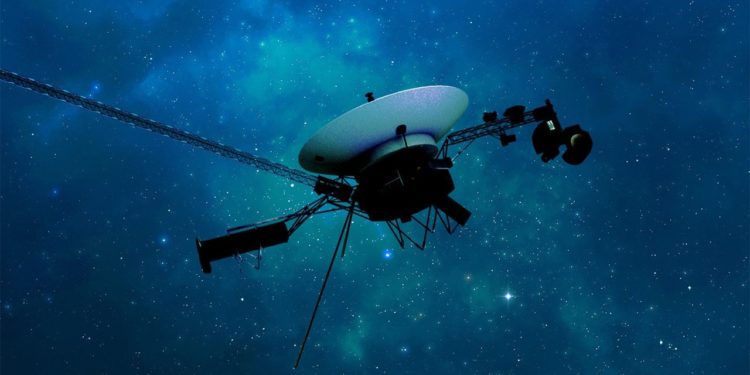FOX NEWS
NASA and Voyager 1 are communicating back and forth again, after the most distant human-made object in space stopped sending usable data back to the space agency nearly five months ago.
NASA’s Jet Propulsion Laboratory said Voyager 1, which is more than 15 billion miles away from Earth, stopped sending readable data back to scientists on Nov. 14, 2023, though mission controllers could still see the spacecraft was receiving commands and operating as intended.
The Southern California-based engineering team responsible for Voyager 1 investigated the problem and learned the issue was connected to one of the spacecraft’s three onboard computers, which is called the Flight Data Subsystem (FDS).
The FDS packages the data collected by the spacecraft before sending it back to earth.
Engineers discovered the chip responsible for storing a portion of the FDS memory was faulty, making the code unusable.
Had the spacecraft been located on Earth, engineers would be able to go in and replace a chip, but because it is in interstellar space, engineers needed to figure out a way to move the affected code somewhere else in the FDS memory.
The code is so large that there is not a single location to store the entire section of the code. So, engineers divided the affected code into sections and planned to move them to various locations in the FDS.
Engineers also had to make sure the code worked together as a whole after being moved.
Once the code was reconfigured, engineers transmitted the changes to the FDS memory on April 18.
The signal takes about 22.5 hours to travel through space until it reaches Voyager 1, and then another 22.5 hours for a signal to come back to earth.
On April 20, the mission team received a response from Voyager 1 and confirmed the modification worked. As a result, engineers now have the ability to check the health and status of the spacecraft.
In the coming months, the team plans to move and adjust additional portions of the FDS software that was affected, including portions that send scientific data back to mission control.
Voyager 1′s odyssey began in 1977 when the spacecraft and its twin, Voyager 2, were launched on a tour of the gas giant planets of the solar system.
After beaming back dazzling postcard views of Jupiter’s giant red spot and Saturn’s shimmering rings, Voyager 2 hopscotched to Uranus and Neptune. Meanwhile, Voyager 1 used Saturn as a gravitational slingshot to power itself past Pluto.



